Febrile Infection Related Epilepsy Syndrome
Febrile infection related epilepsy syndrome. The literature on FIRES is scarce. Febrile infection-related epilepsy syndrome FIRES is a catastrophic epileptic encephalopathy with known febrile infection preceding the onset of refractory status epilepticus but without evidence of identified infectious encephalitis. It usually affects school-aged children with an.
Febrile Infection-Related Epilepsy Syndrome. To analyze the electroclinical features neuroimaging findings treatment and outcome of 12 patients with febrile infection-related epilepsy syndrome FIRES. Febrile infection-related epilepsy syndrome FIRES is a severe postinfectious neurological disorder that presents with status epilepticus in a previously normal child or less commonly adult after a febrile illness.
They are currently seizure free on a combination of oral phenobarbitone perampanel and levetiracetam but have some cognitive sequelae. Finally we propose the more comprehensive term febrile infectionrelated epilepsy syndrome to characterize the major features occurring in a consistent sequence whose acronym FIRES better reflects the urgent destructive and fatal course after febrile onset. This document was downloaded for personal use only.
Unauthorized distribution is strictly prohibited. Definition This syndrome describes an explosive-onset potentially fatal acute epileptic encephalopathy that develops in previously healthy children and adolescents following the onset of a non-specific febrile illness. Febrile infection related epilepsy syndrome FIRES has previously also been known as fever induced refractory epilepsy in school-aged children devastating epileptic encephalopathy in school aged children DESC and acute encephalitis with refractory repetitive partial seizures AERRPS.
Febrile Infection-Related Epilepsy Syndrome FIRES is a subset of NORSE that requires a febrile infection between 24 hours and 2 weeks prior to the onset of refractory status epilepticus with or without fever at the onset of status epilepticus and with no restriction to the age of the patient. This rare entity comprises a small minority of all patients with status epilepticus SE. FIRES Febrile Infection-Related Epilepsy Syndrome is a sub-type of cryptogenic new-onset refractory status epilepticus NORSE.
They were later diagnosed with Febrile-Infection Related Epilepsy Syndrome after extensive investigations including a normal brain MRI and a lumbar puncture which showed a mildly elevated white cell count but was otherwise unremarkable. It is characterized by acute. Therapies The exact pathogenesis of FIRES is not yet understood so targeted therapies are still being developed.
NORSE describes a condition in which a healthy person who has not had seizures before begins having seizures. Febrile Infection-Related Epilepsy Syndrome FIRES is a severe brain disorder that develops in previously healthy children after a fever This syndrome causes a very sudden acute onset of nearly continuous seizures status epilepticus which do not respond to seizure medications medications to stop seizures.
Febrile infection-related epilepsy syndrome FIRES is a severe postinfectious neurological disorder that presents with status epilepticus in a previously normal child or less commonly adult after a febrile illness.
Encephalopathy in school-age children however is still the preferred term in France10 It is controversialwhether FIRESis a. Febrile infection-related epilepsy syndrome FIRES is a catastrophic epileptic encephalopathy with known febrile infection preceding the onset of refractory status epilepticus but without evidence of identified infectious encephalitis. Therapies The exact pathogenesis of FIRES is not yet understood so targeted therapies are still being developed. Febrile Infection-Related Epilepsy Syndrome FIRES is a severe brain disorder that develops in previously healthy children after a fever This syndrome causes a very sudden acute onset of nearly continuous seizures status epilepticus which do not respond to seizure medications medications to stop seizures. It usually affects school-aged children with an. Febrile Infection-Related Epilepsy Syndrome FIRES is a subset of NORSE that requires a febrile infection between 24 hours and 2 weeks prior to the onset of refractory status epilepticus with or without fever at the onset of status epilepticus and with no restriction to the age of the patient. Encephalopathy in school-age children however is still the preferred term in France10 It is controversialwhether FIRESis a. FIRES febrile infection-related epilepsy syndrome. Over a few days the seizures increase in frequency and length and evolve into status epilepticus SE.
This rare entity comprises a small minority of all patients with status epilepticus SE. Febrile Infection-Related Epilepsy Syndrome. Febrile infection related epilepsy syndrome FIRES has previously also been known as fever induced refractory epilepsy in school-aged children devastating epileptic encephalopathy in school aged children DESC and acute encephalitis with refractory repetitive partial seizures AERRPS. NORSE describes a condition in which a healthy person who has not had seizures before begins having seizures. Febrile Infection-Related Epilepsy Syndrome FIRES is a severe brain disorder that develops in previously healthy children after a fever This syndrome causes a very sudden acute onset of nearly continuous seizures status epilepticus which do not respond to seizure medications medications to stop seizures. There is an apparent fulminant inflammatory process encephalitis involved. Febrile infectionrelated epilepsy syndrome FIRES is a catastrophic epileptic encephalopathy with a yet undefined etiology.

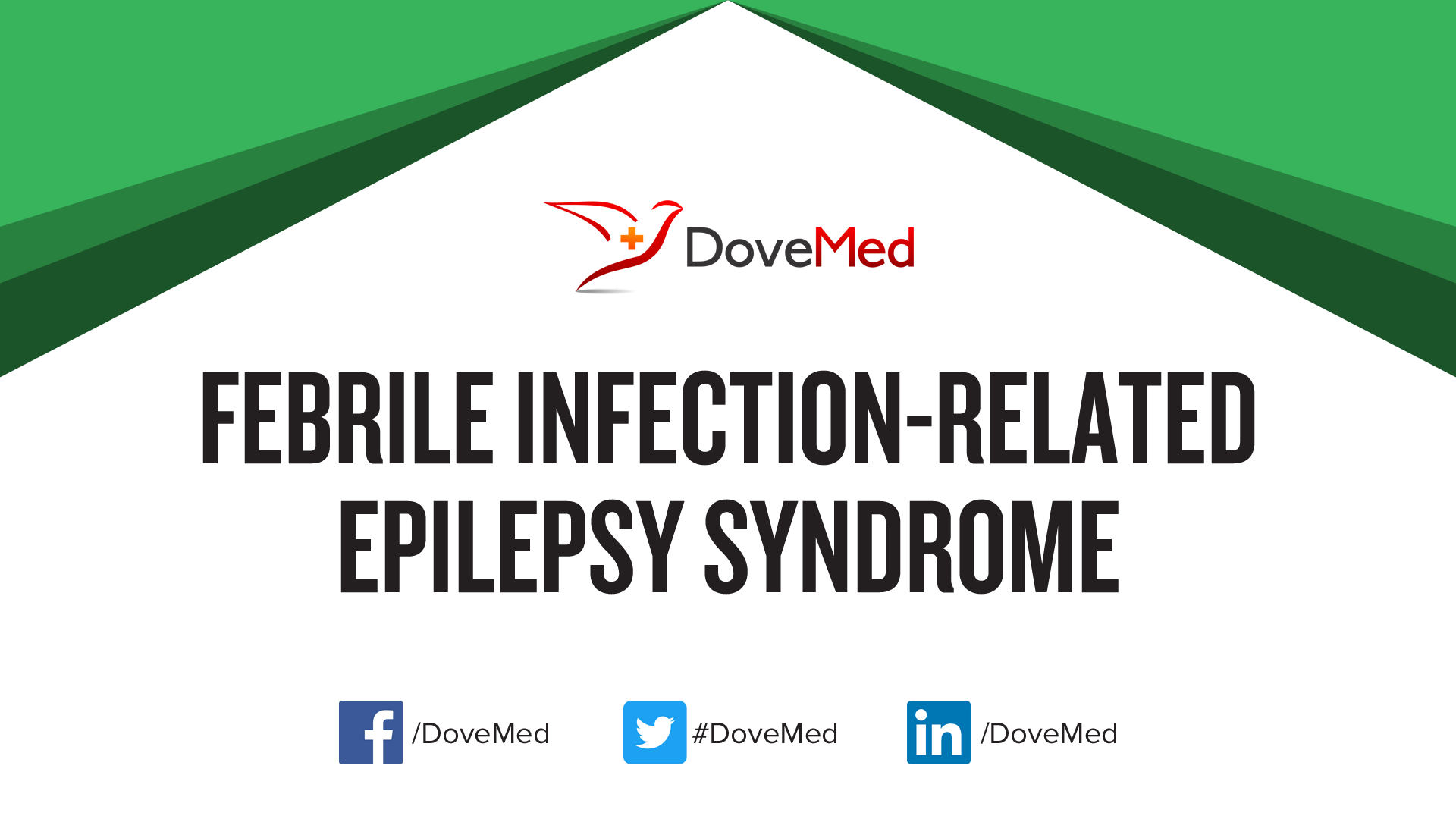













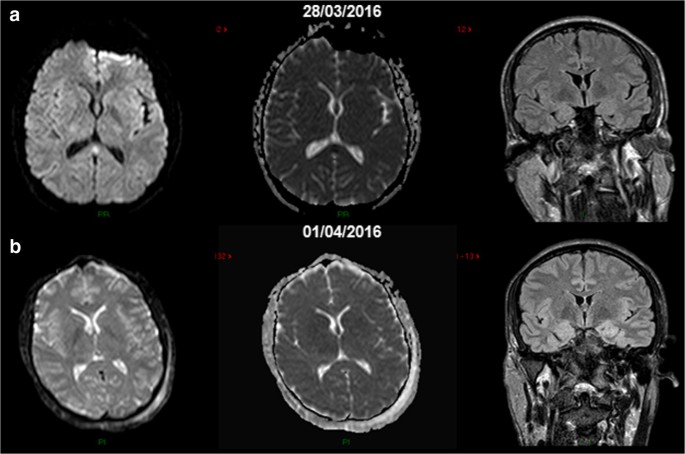





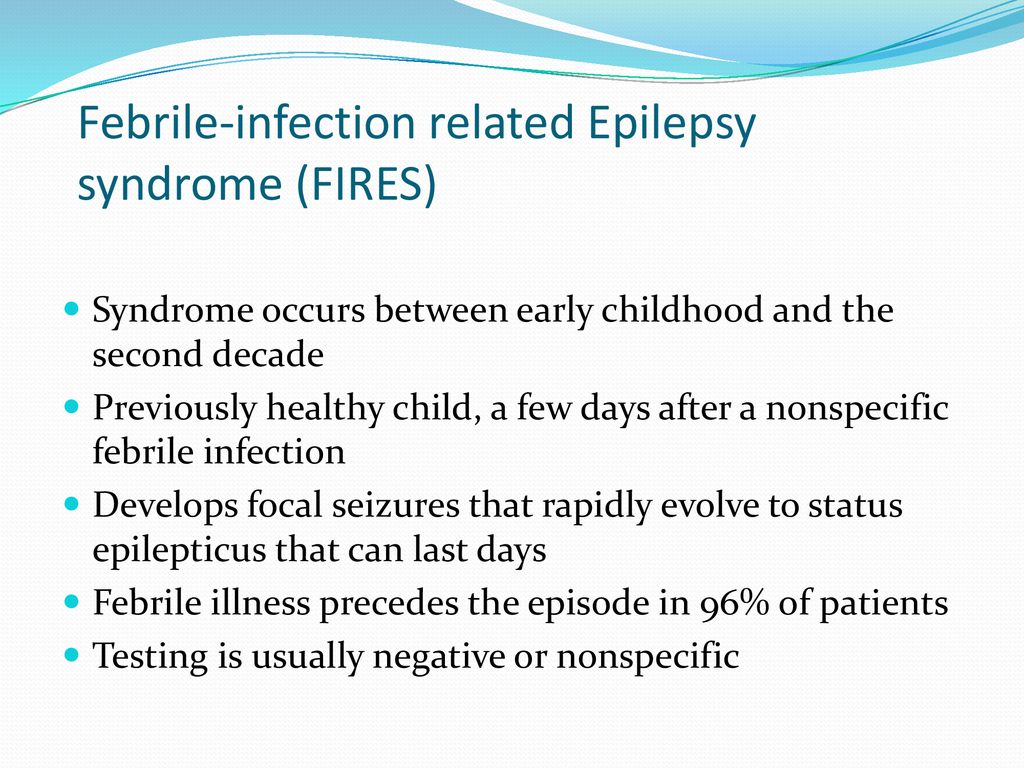

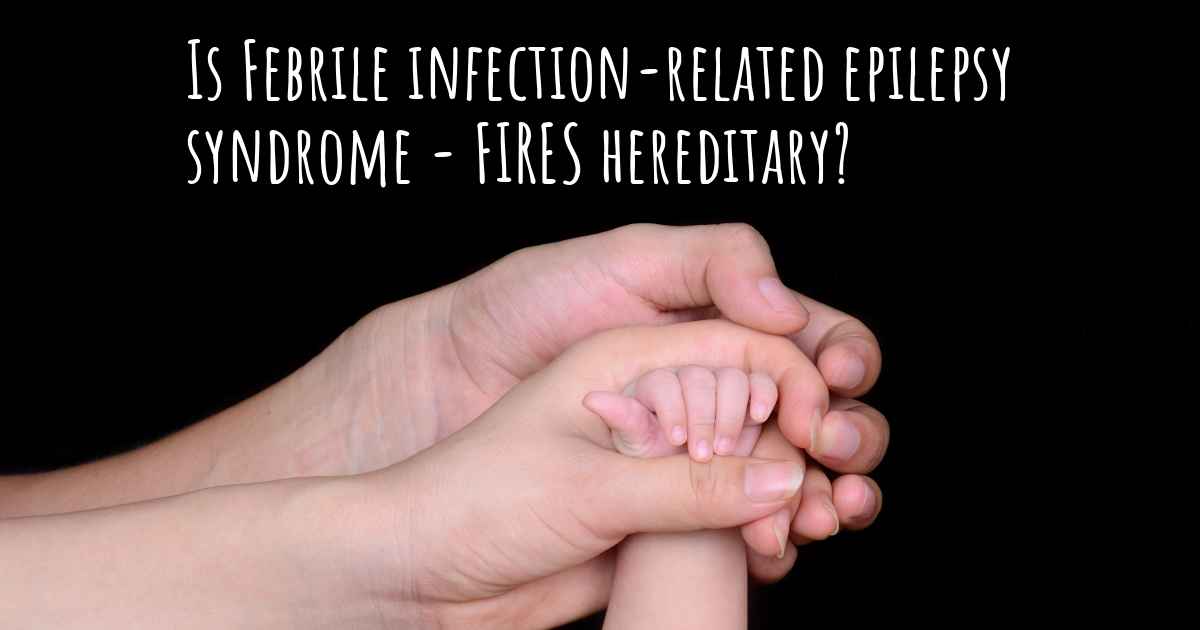


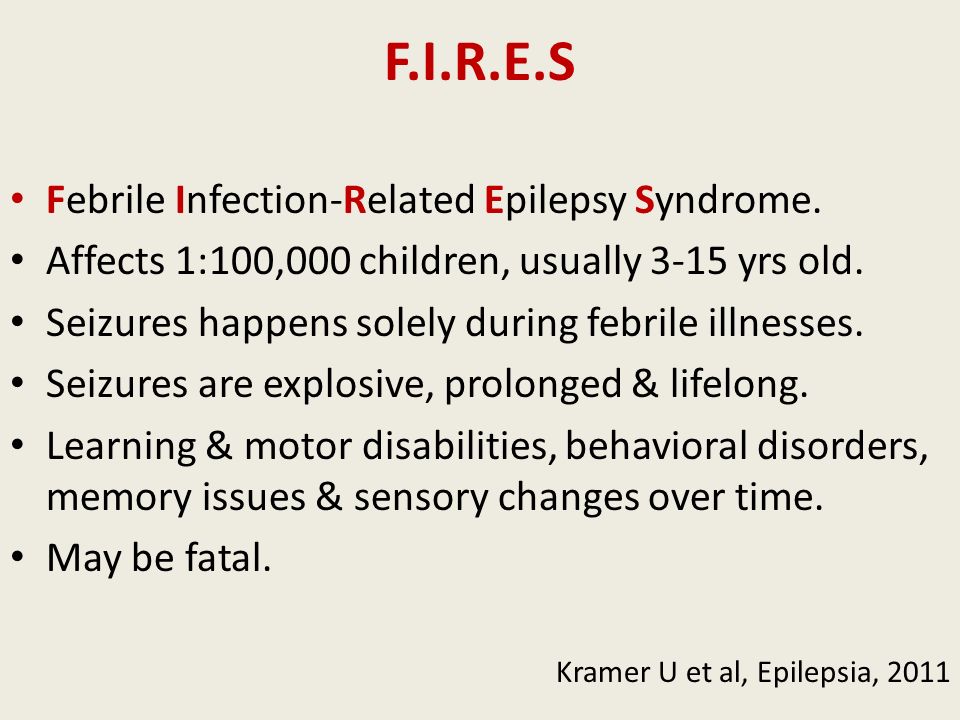

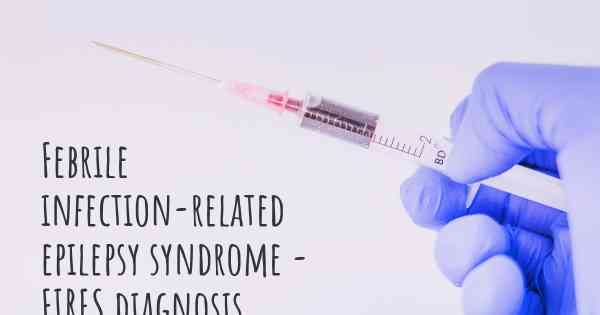
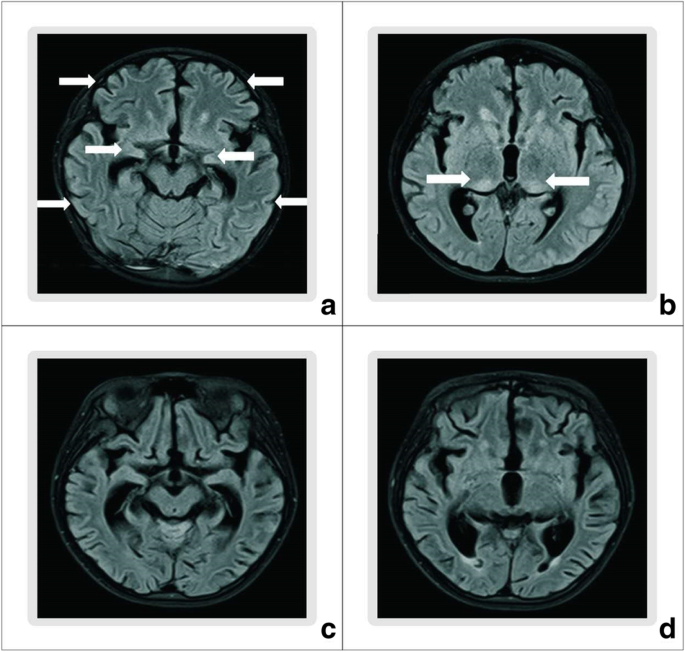


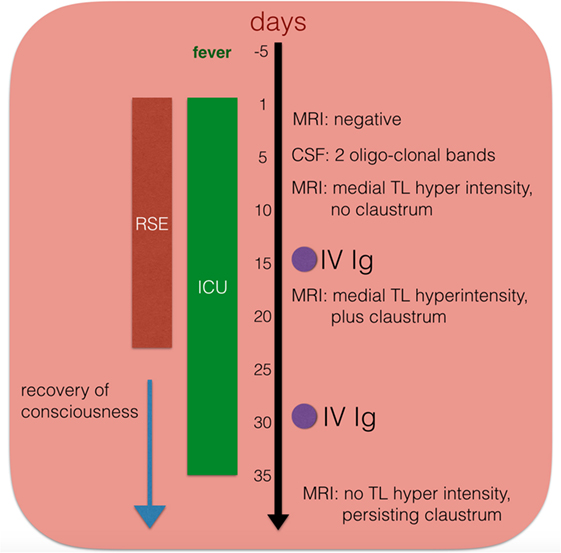
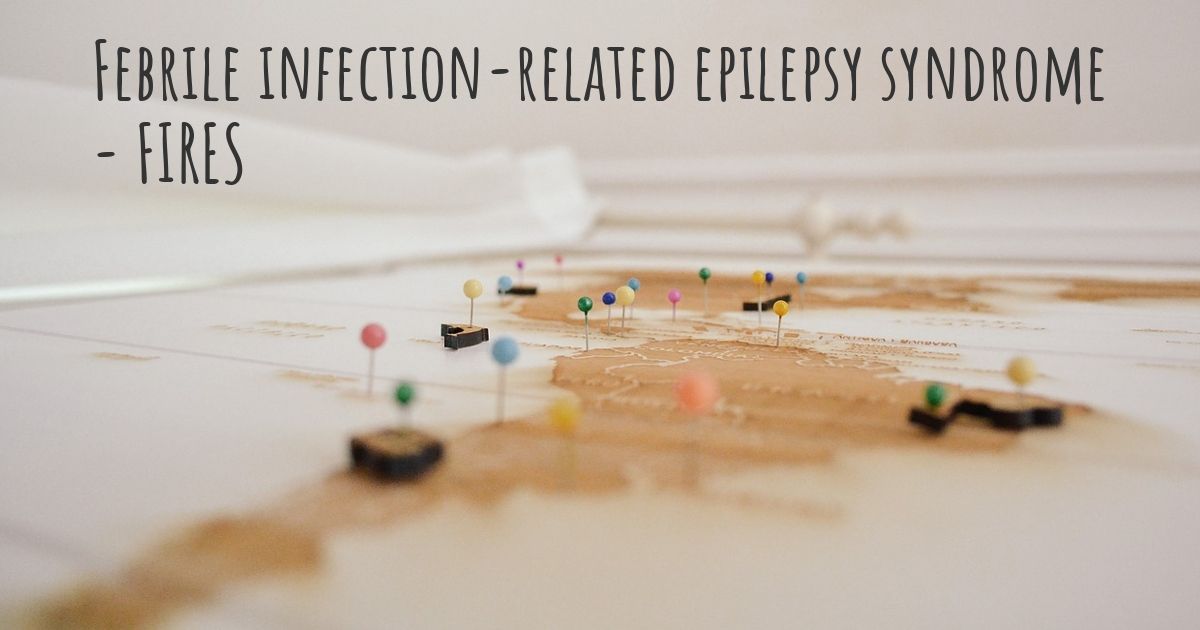



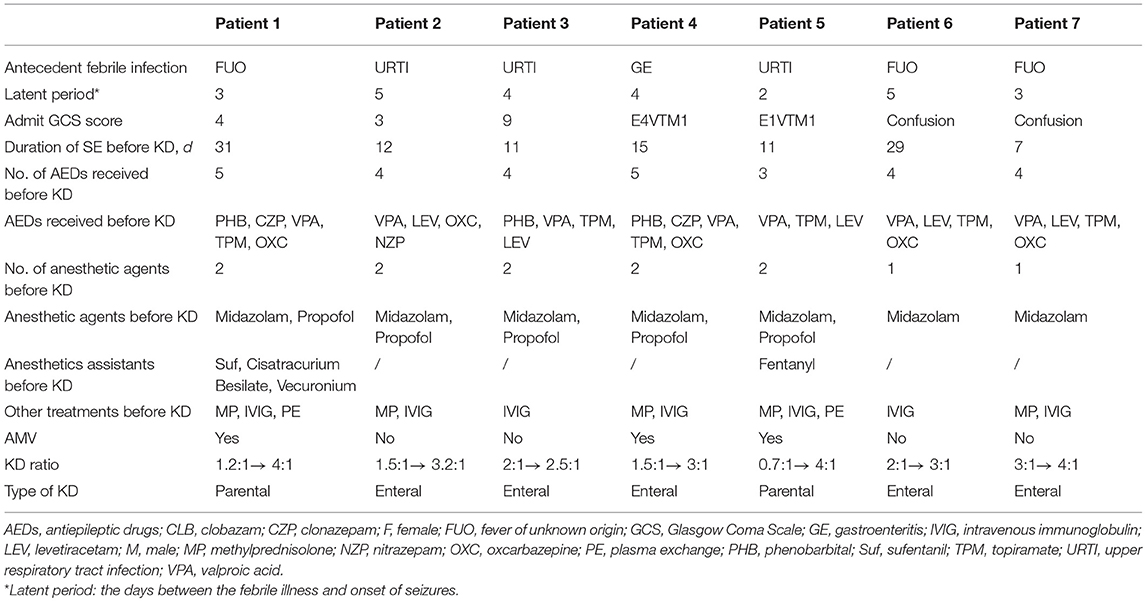





Post a Comment for "Febrile Infection Related Epilepsy Syndrome"